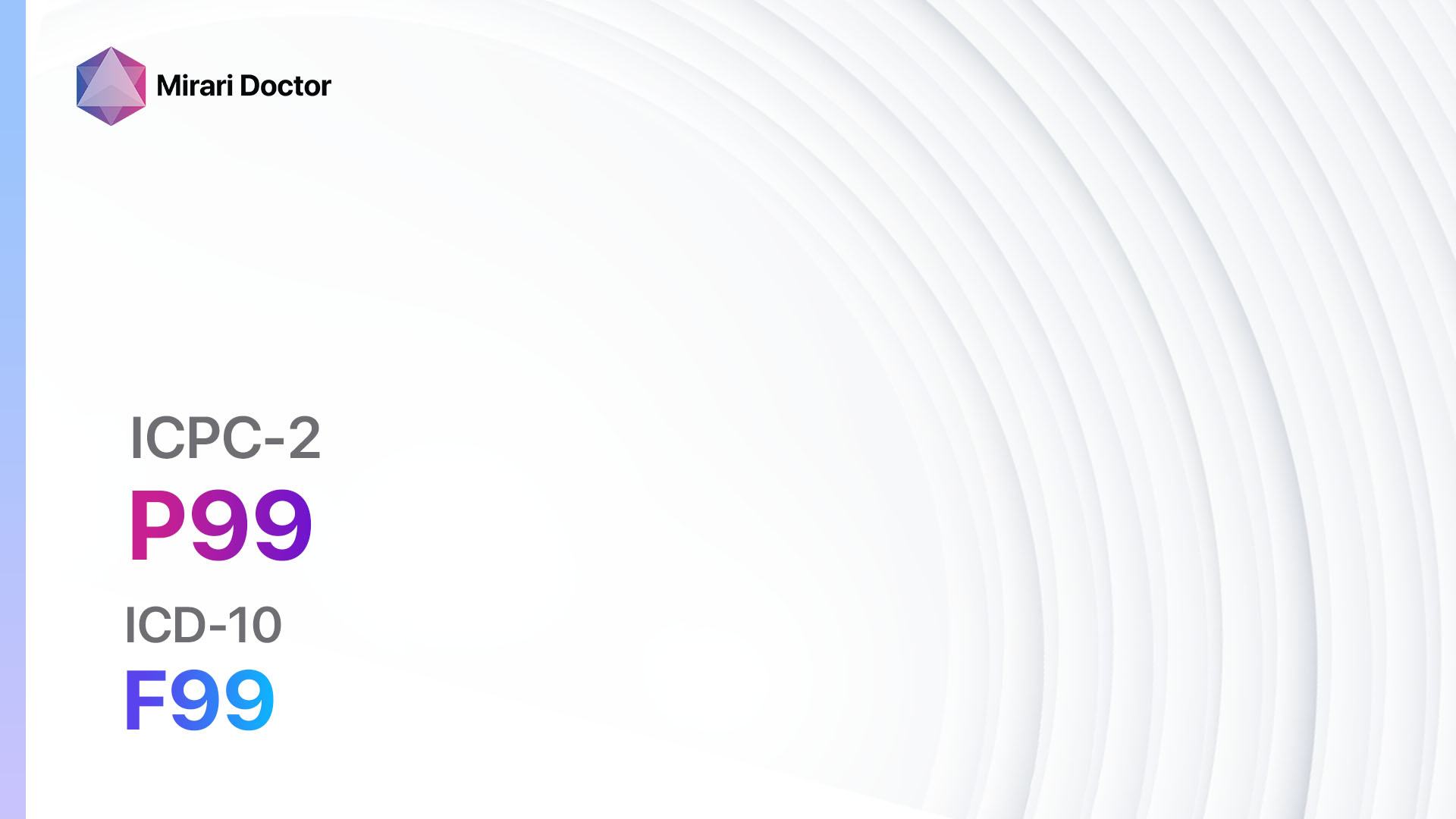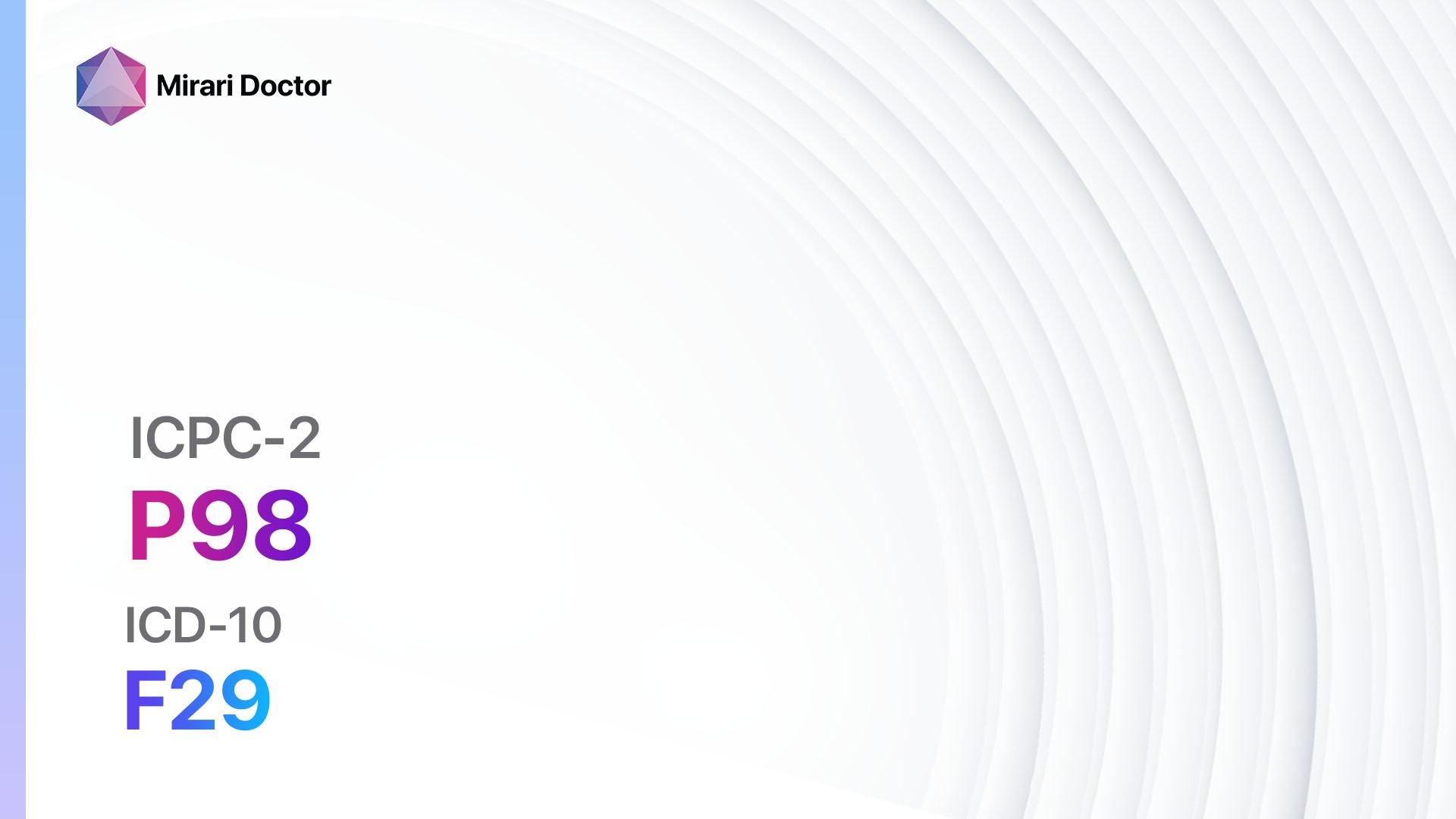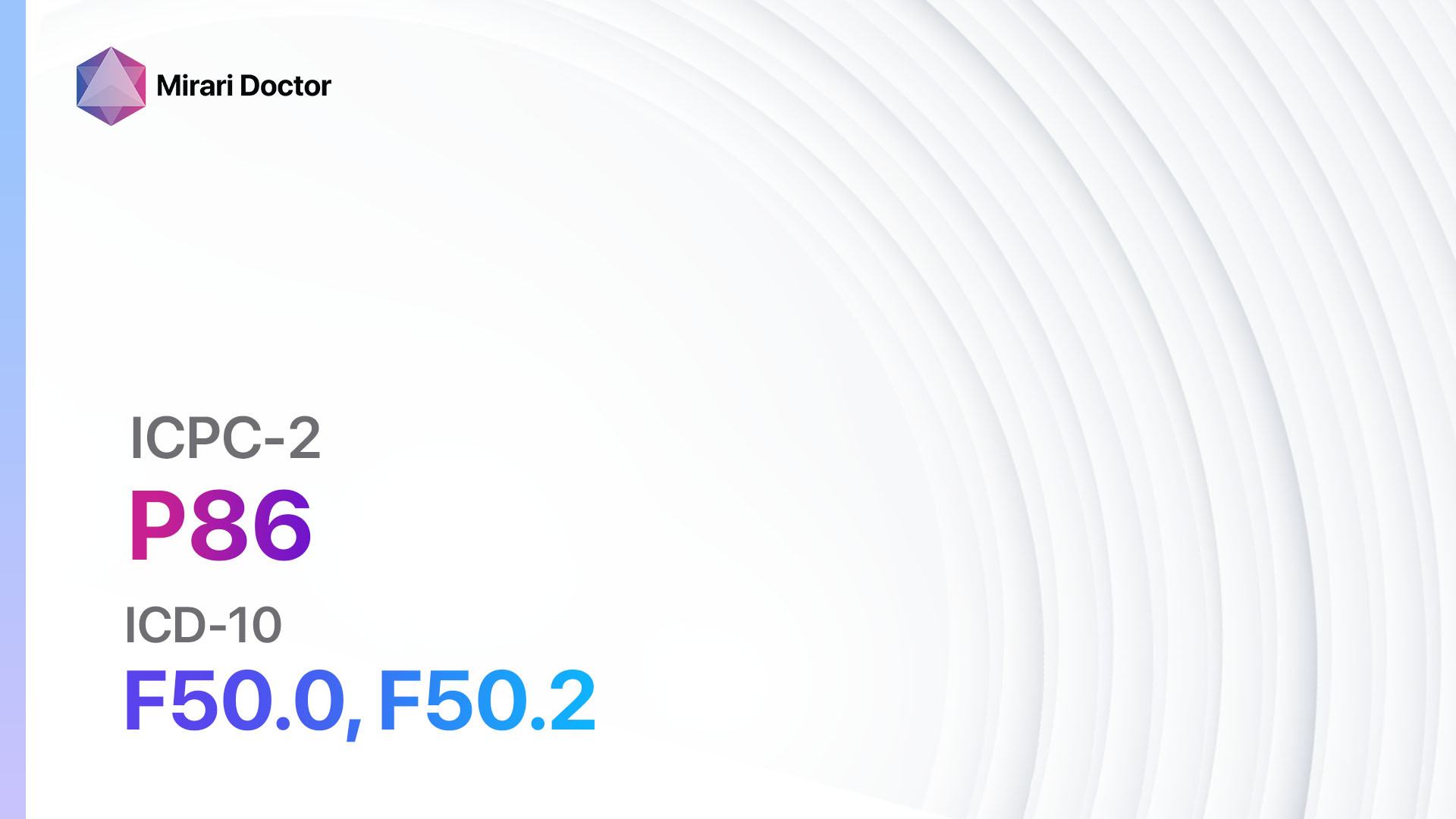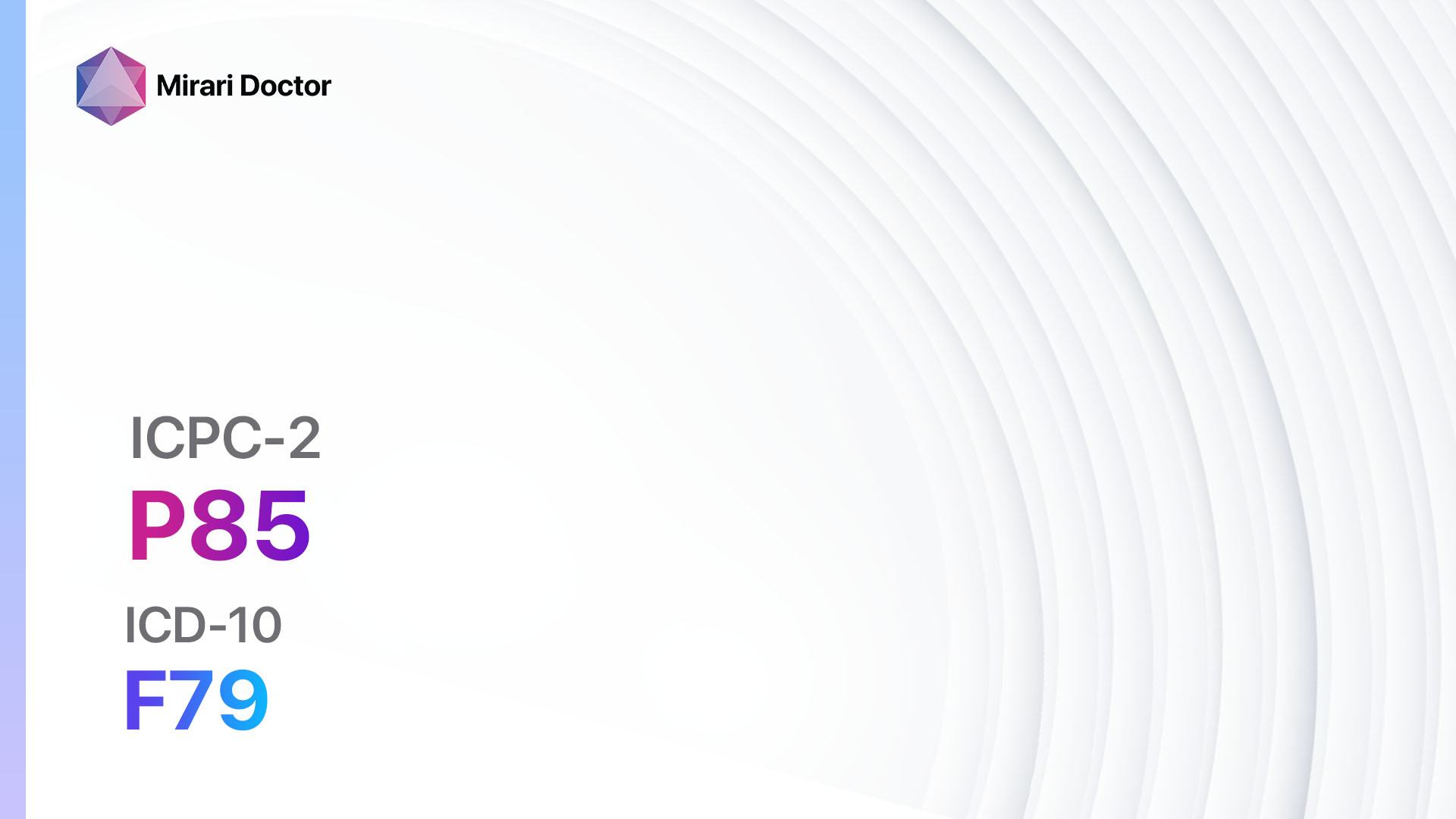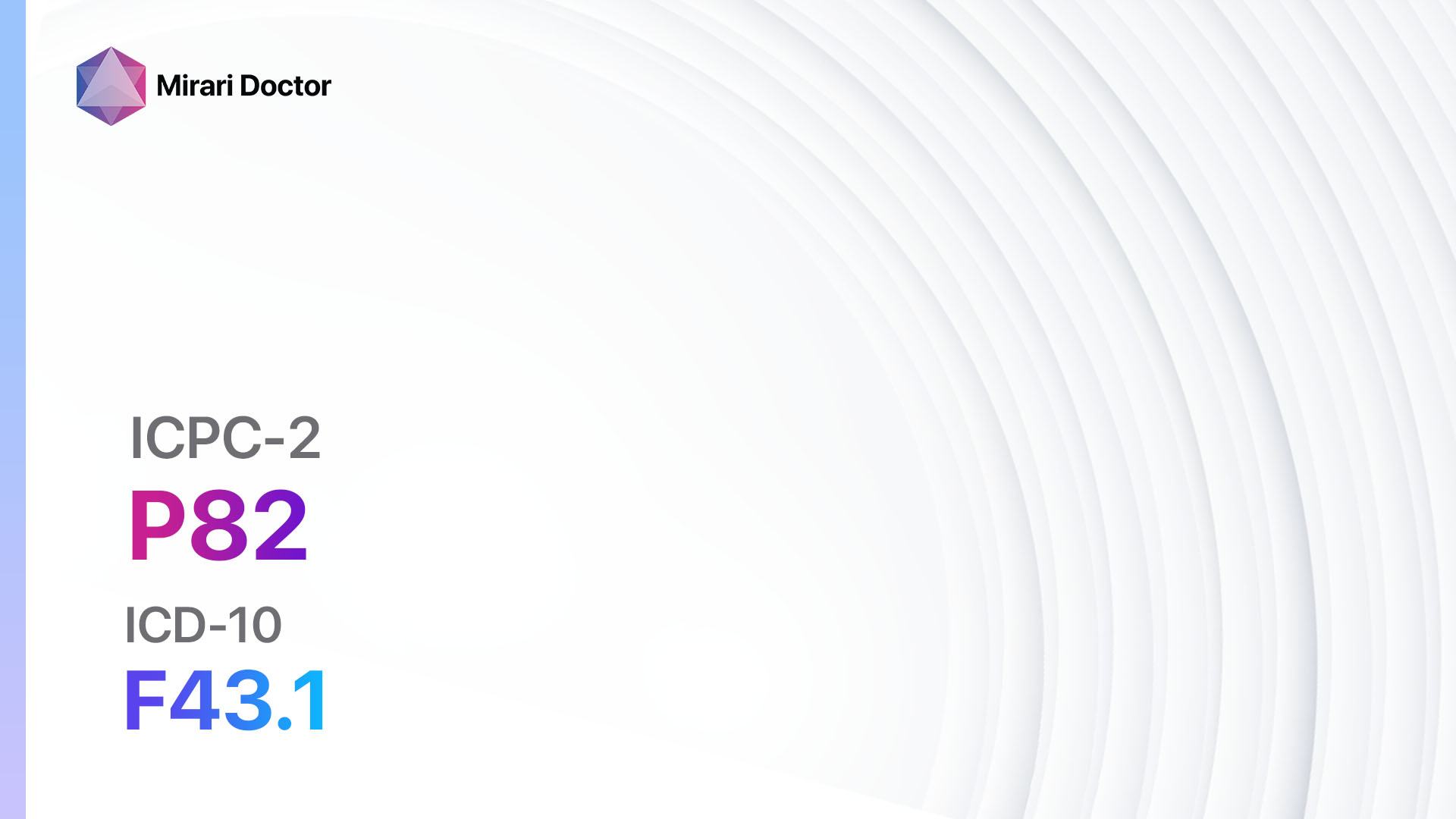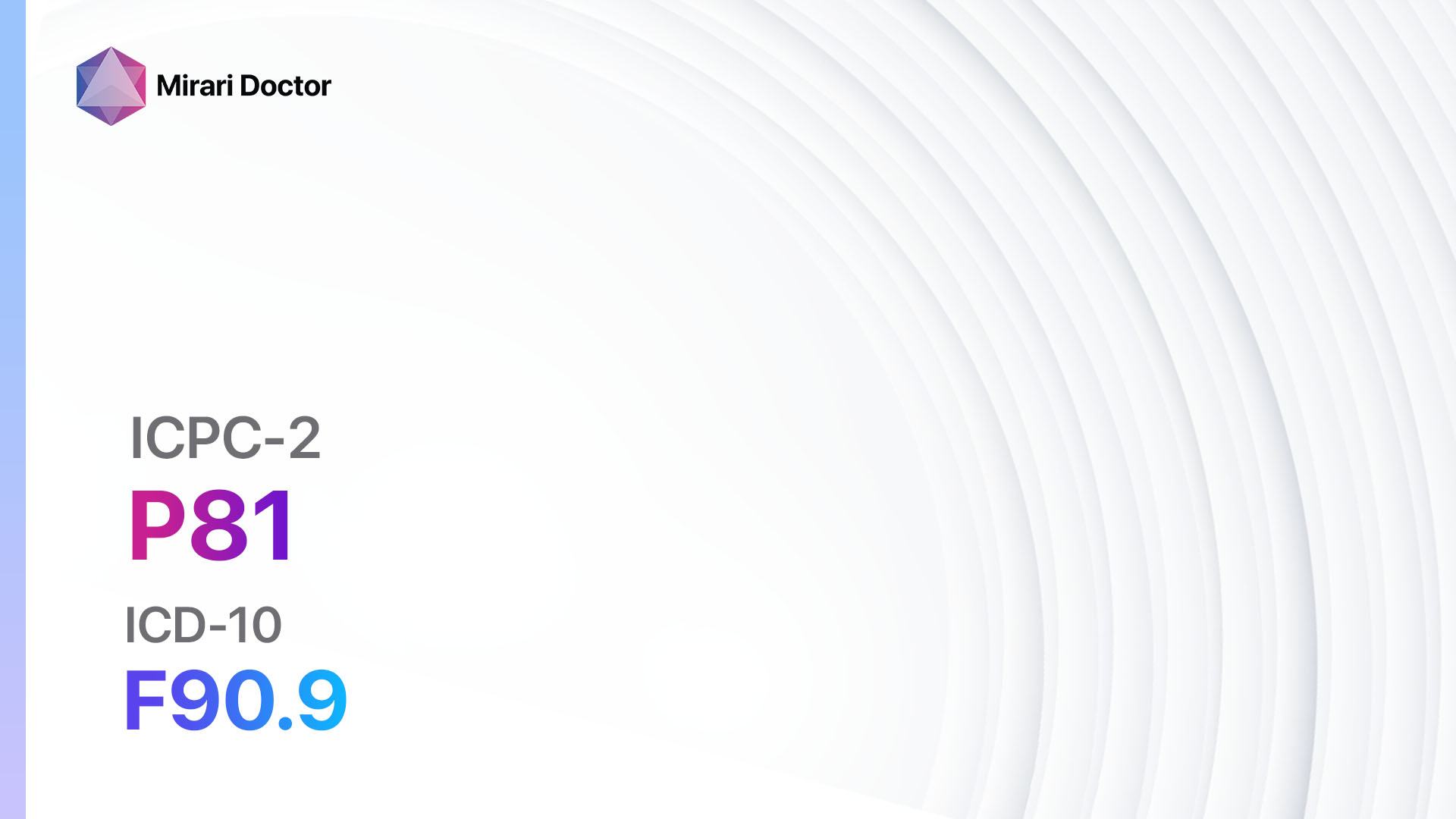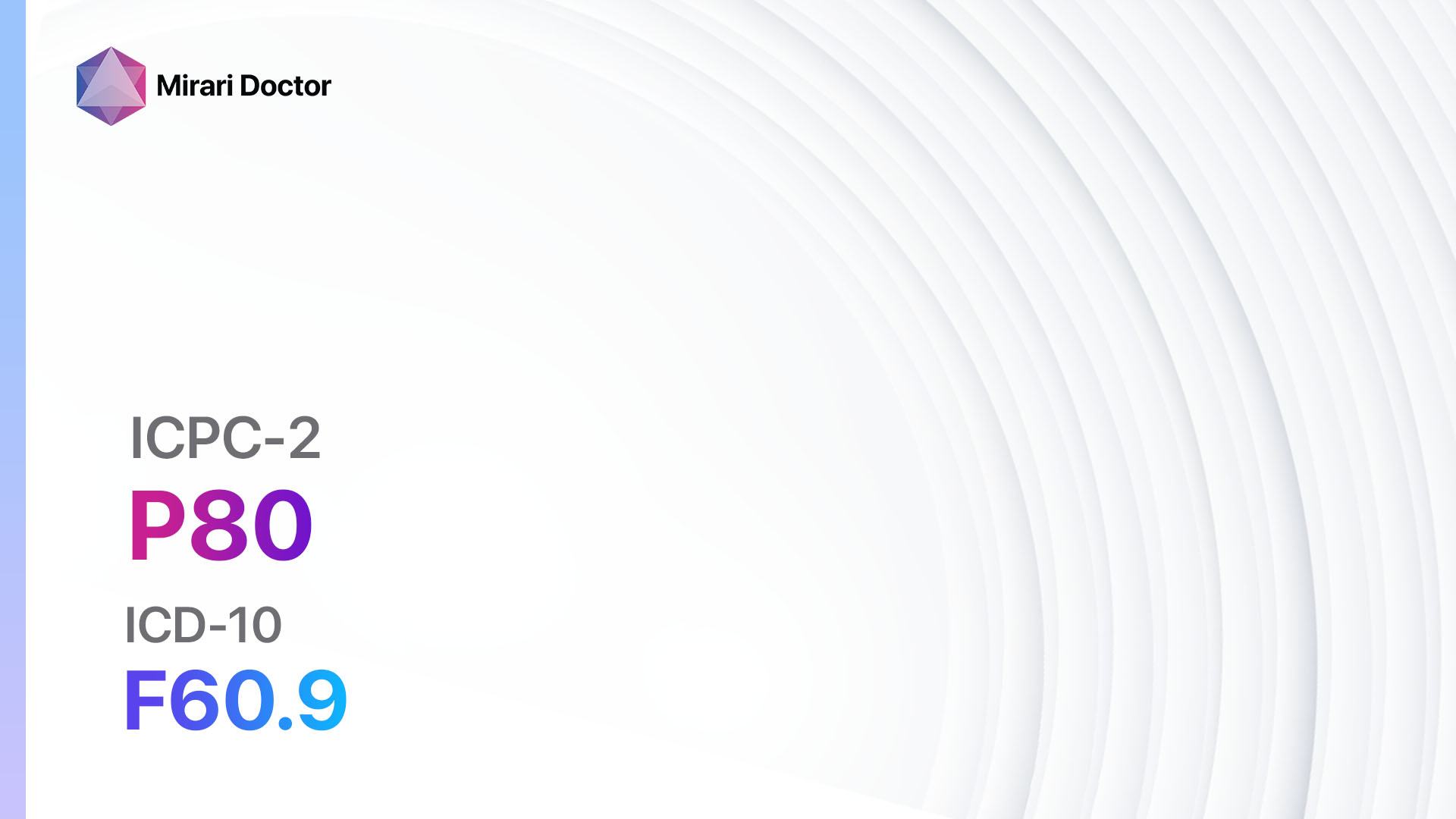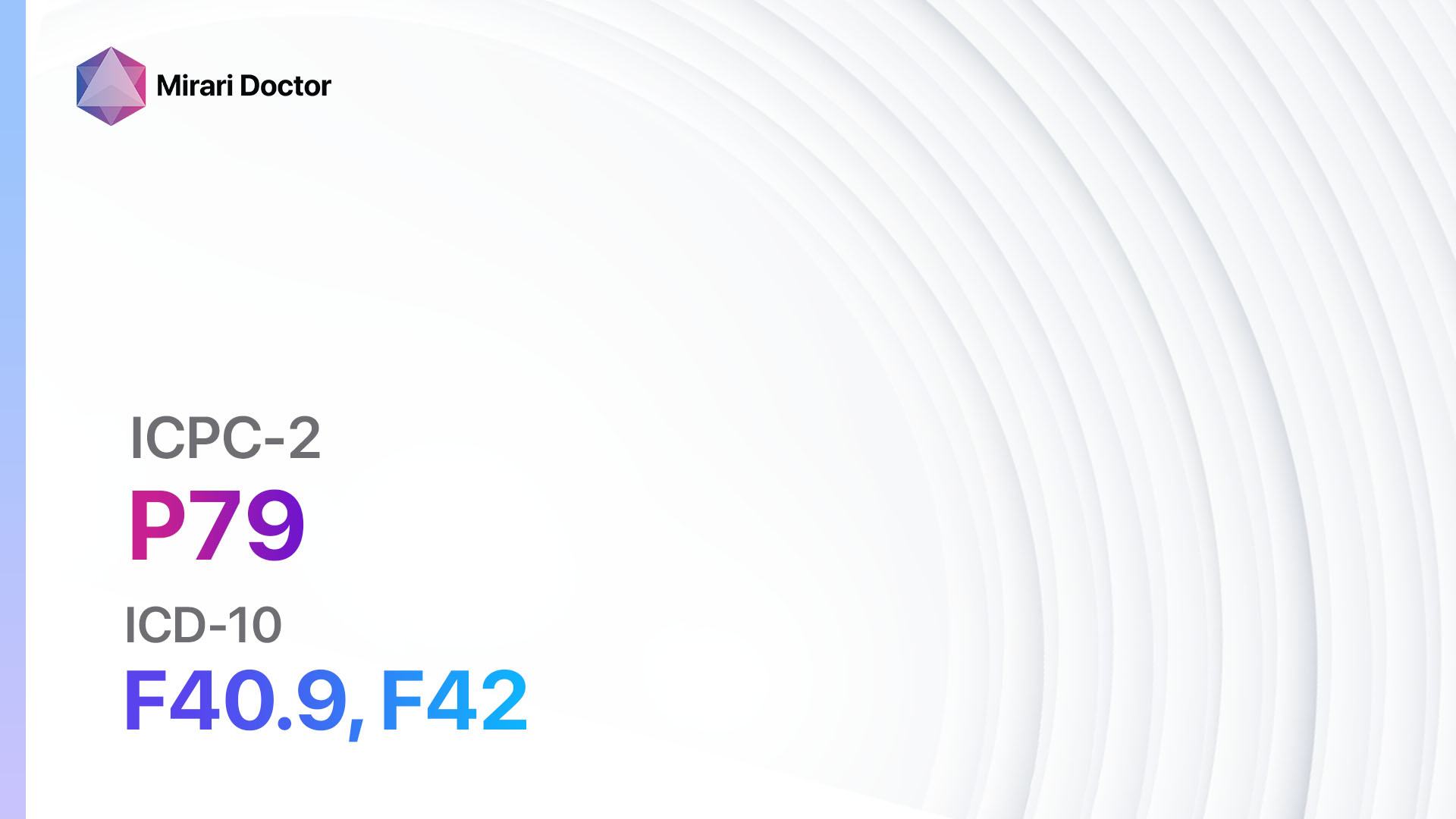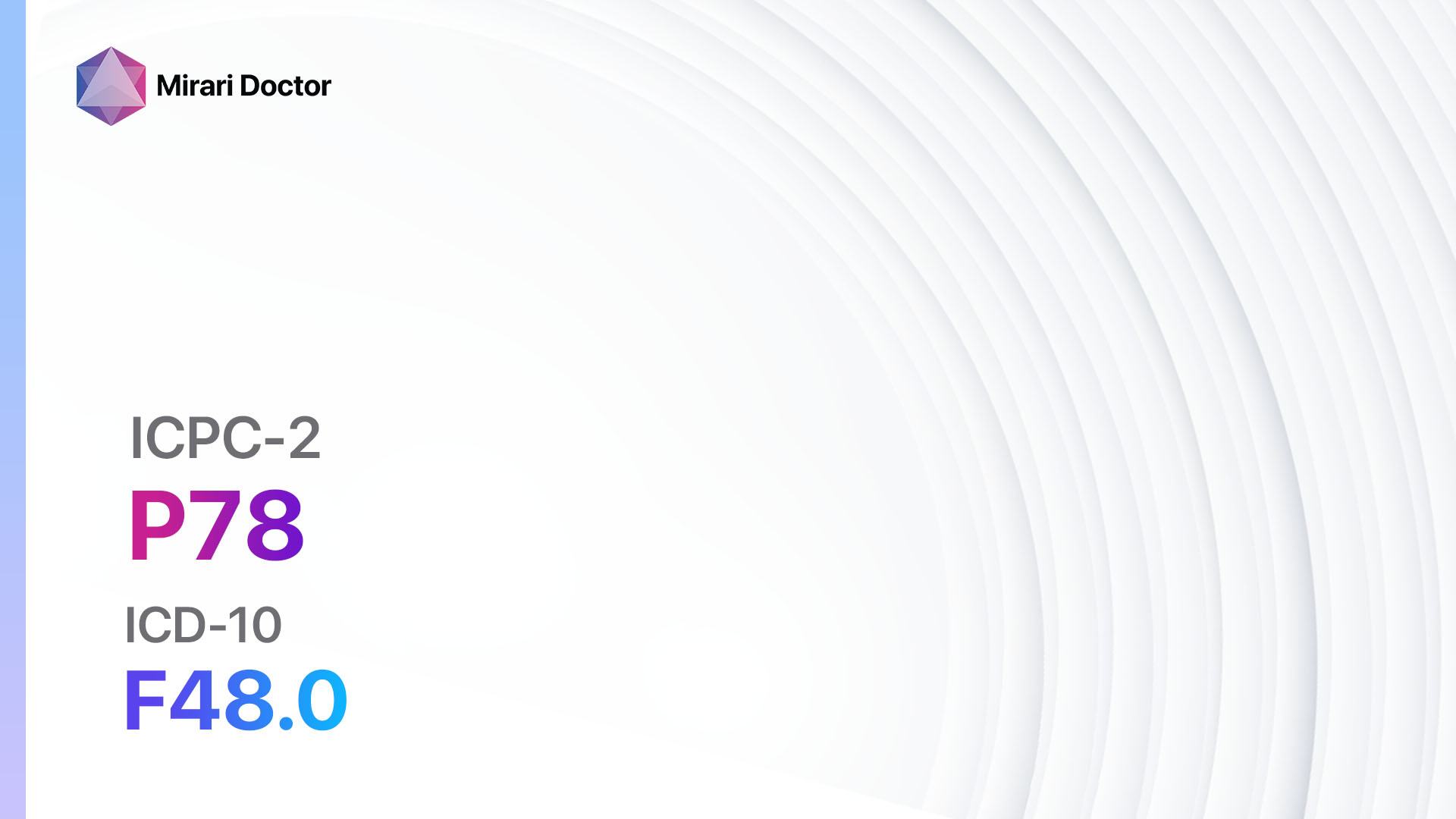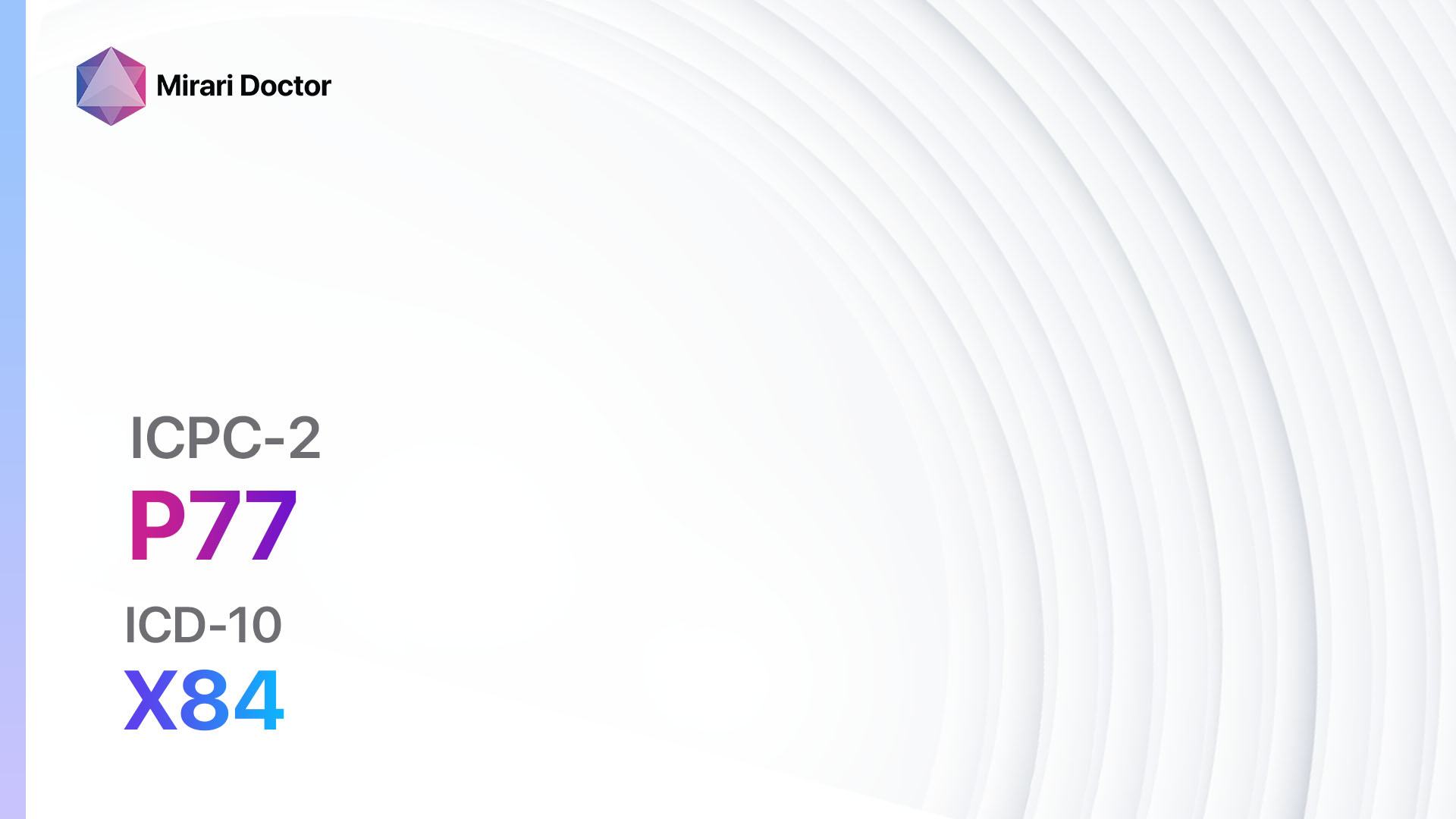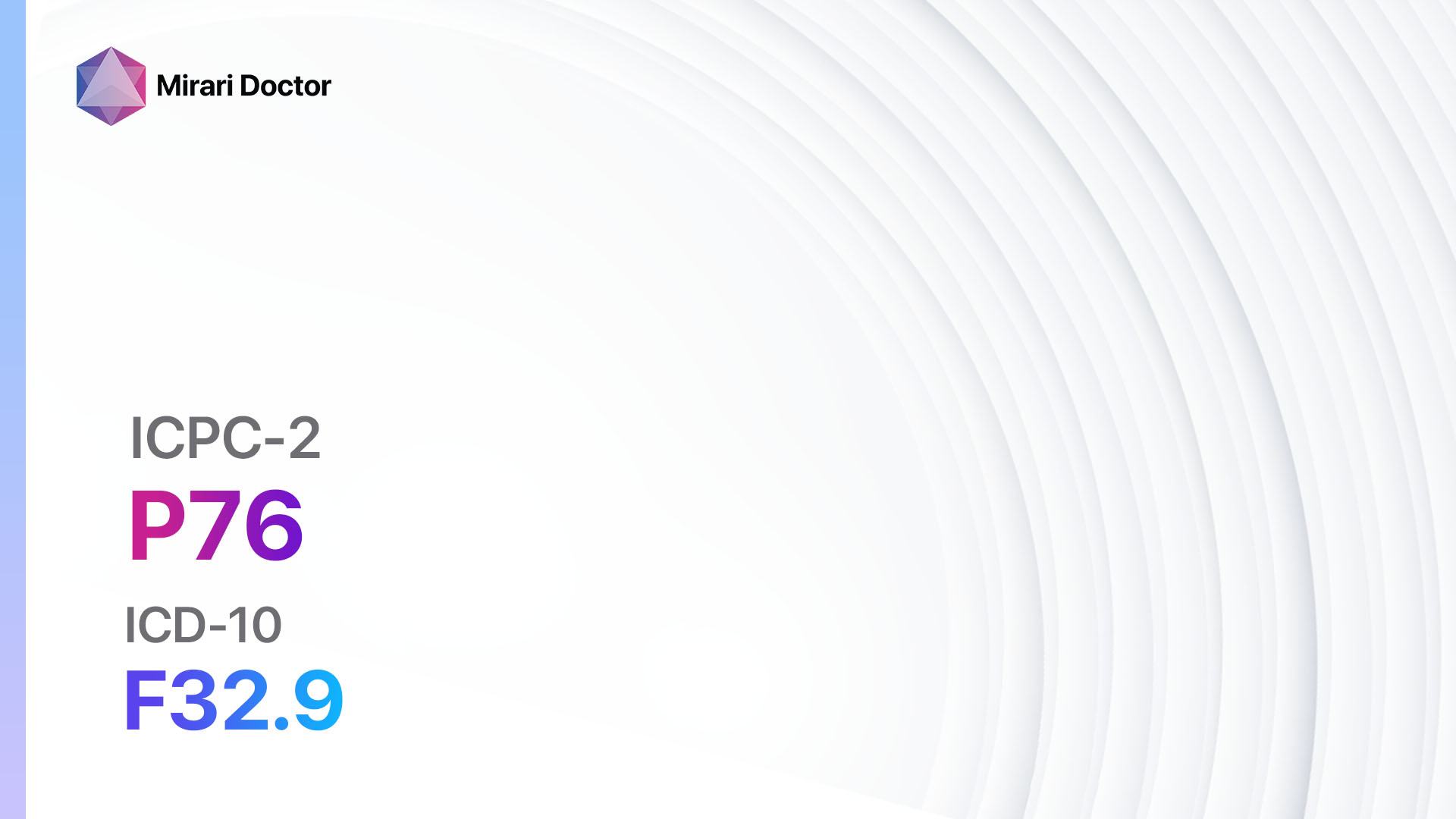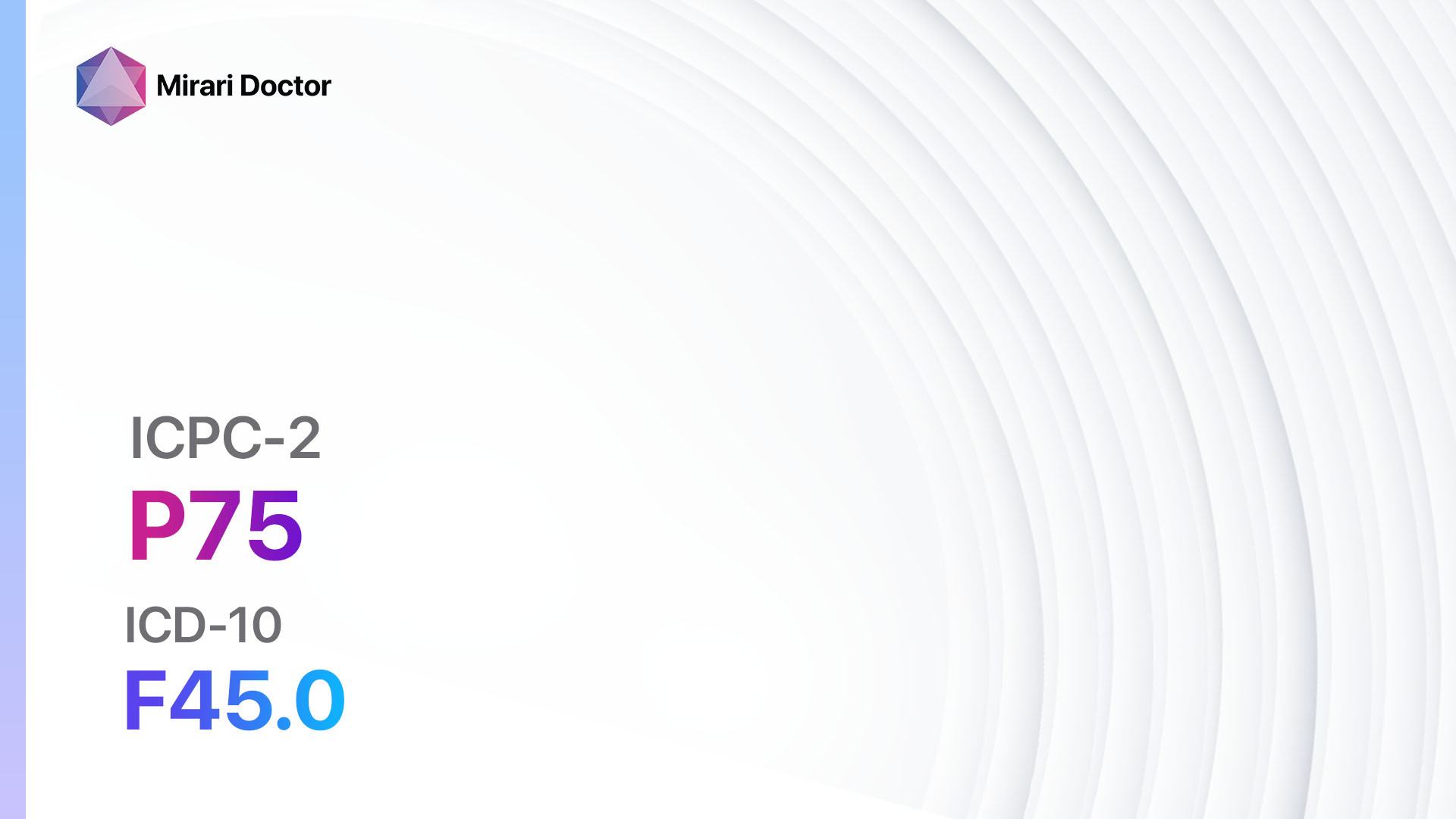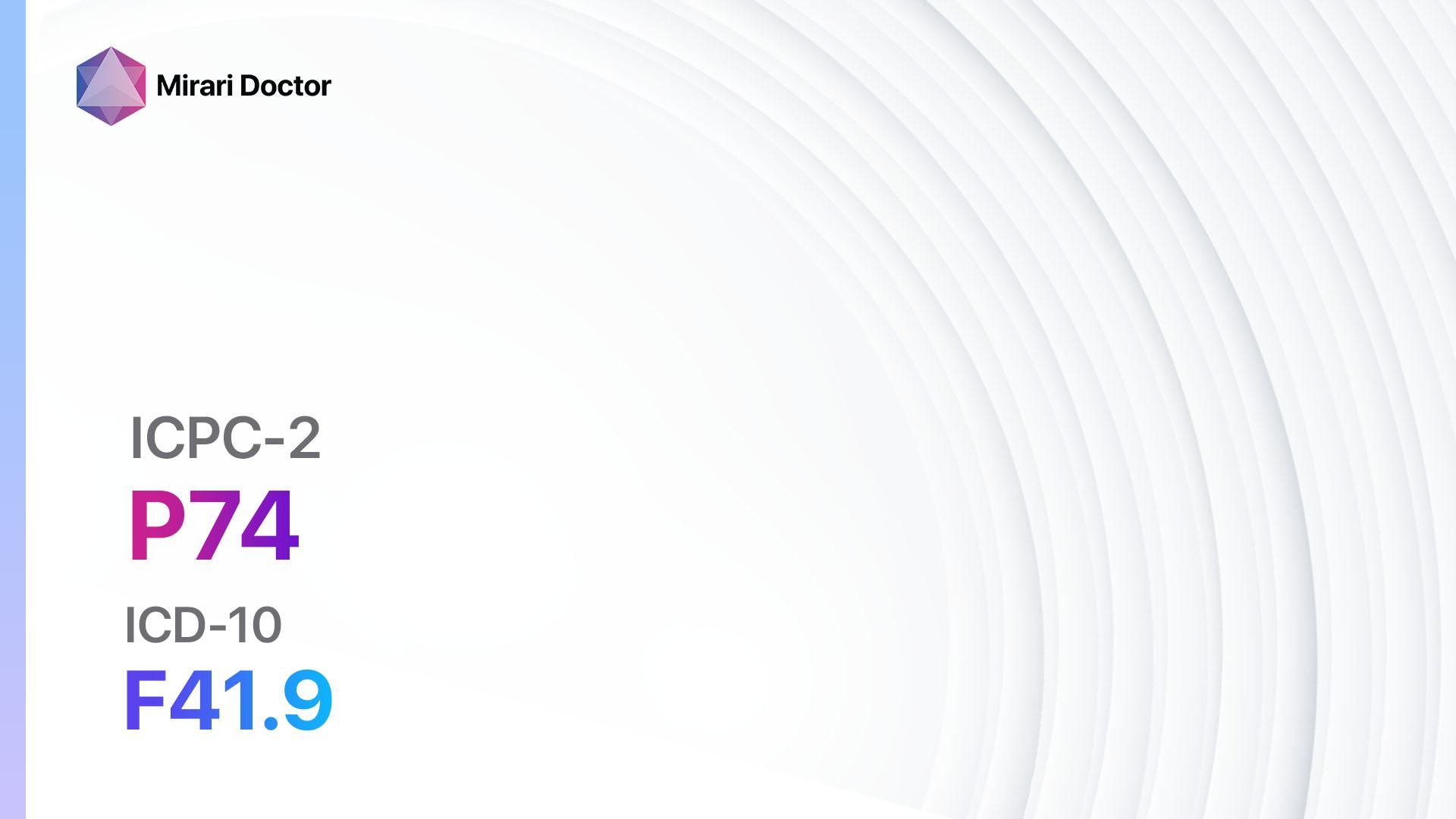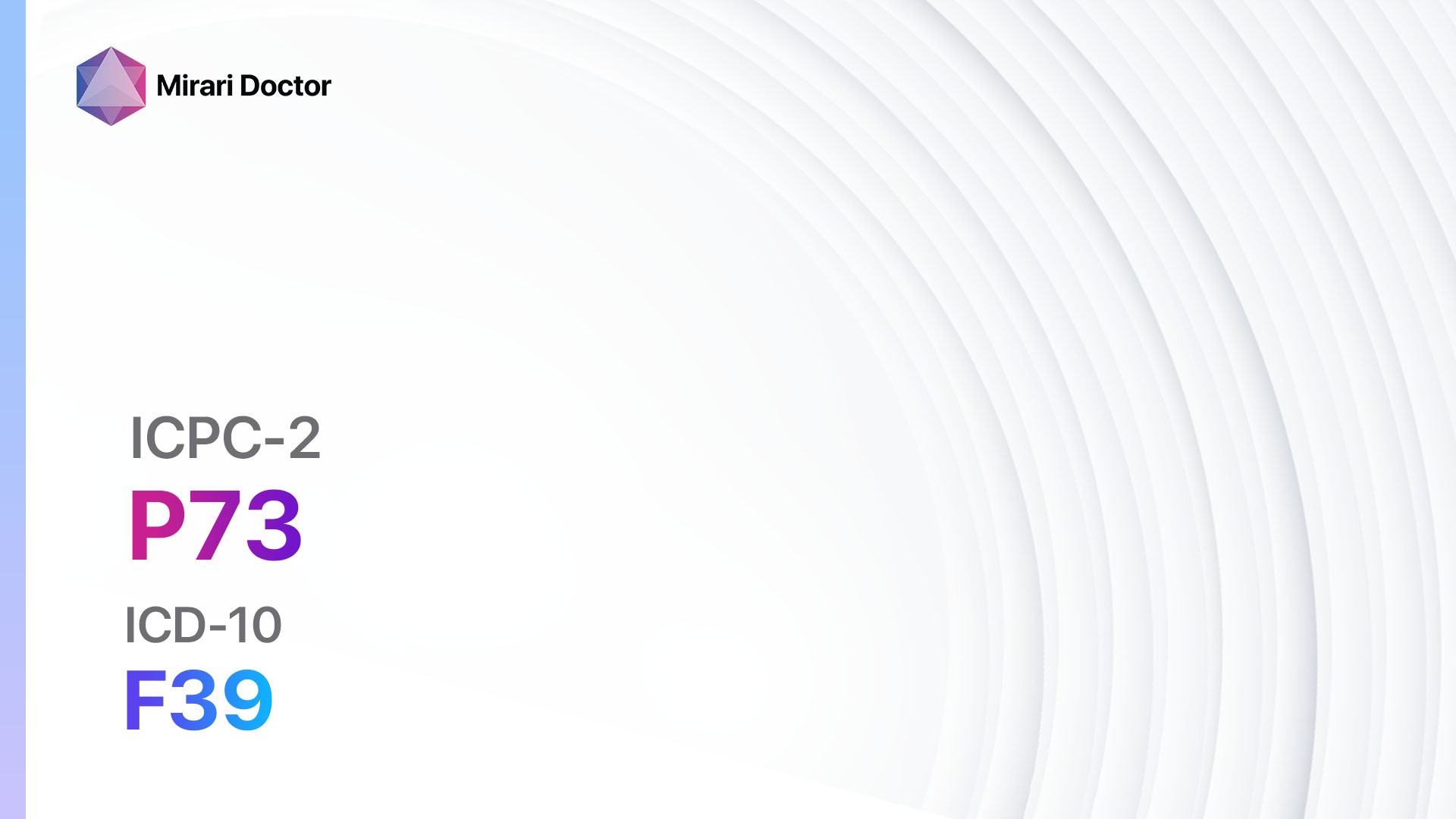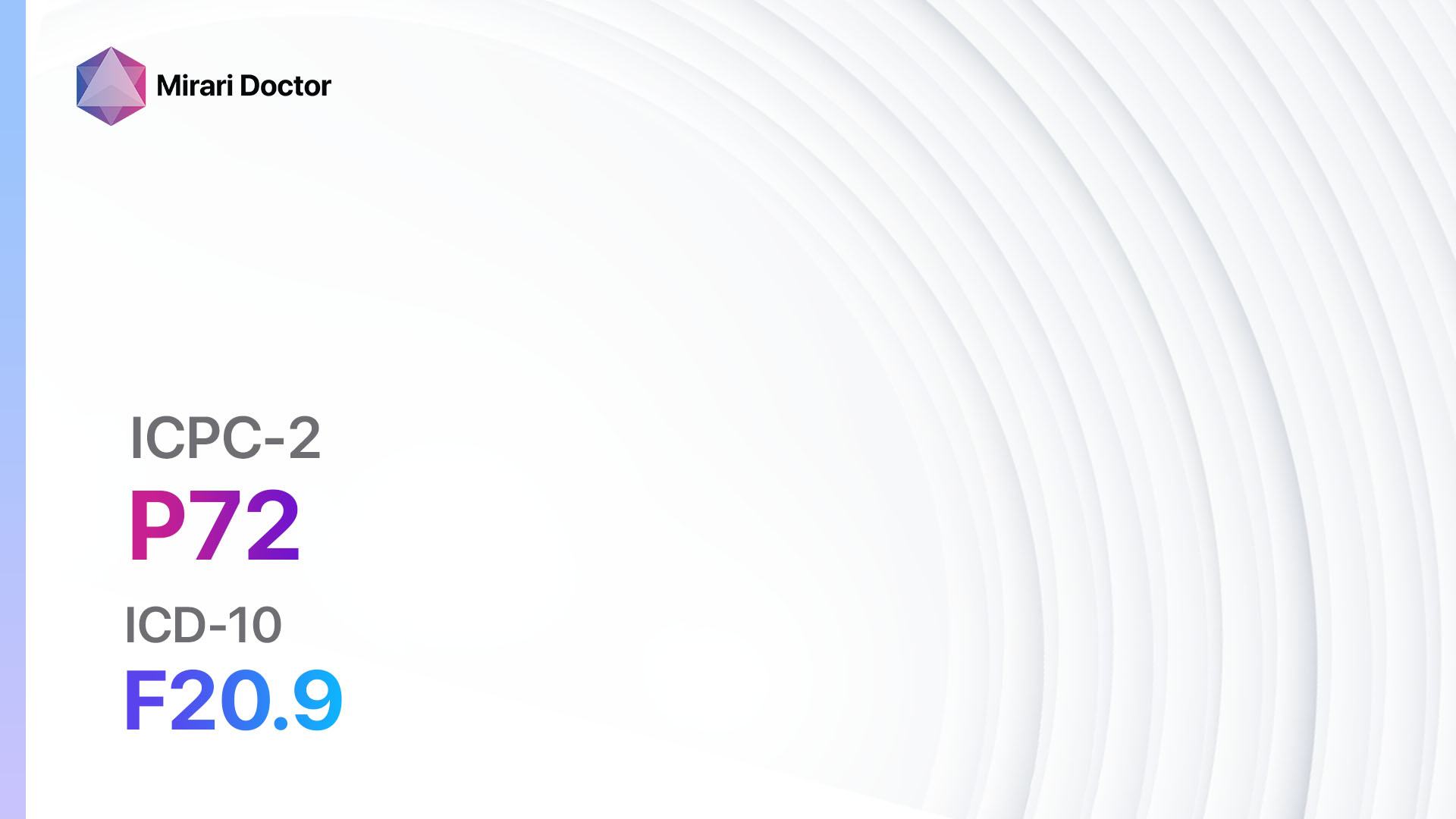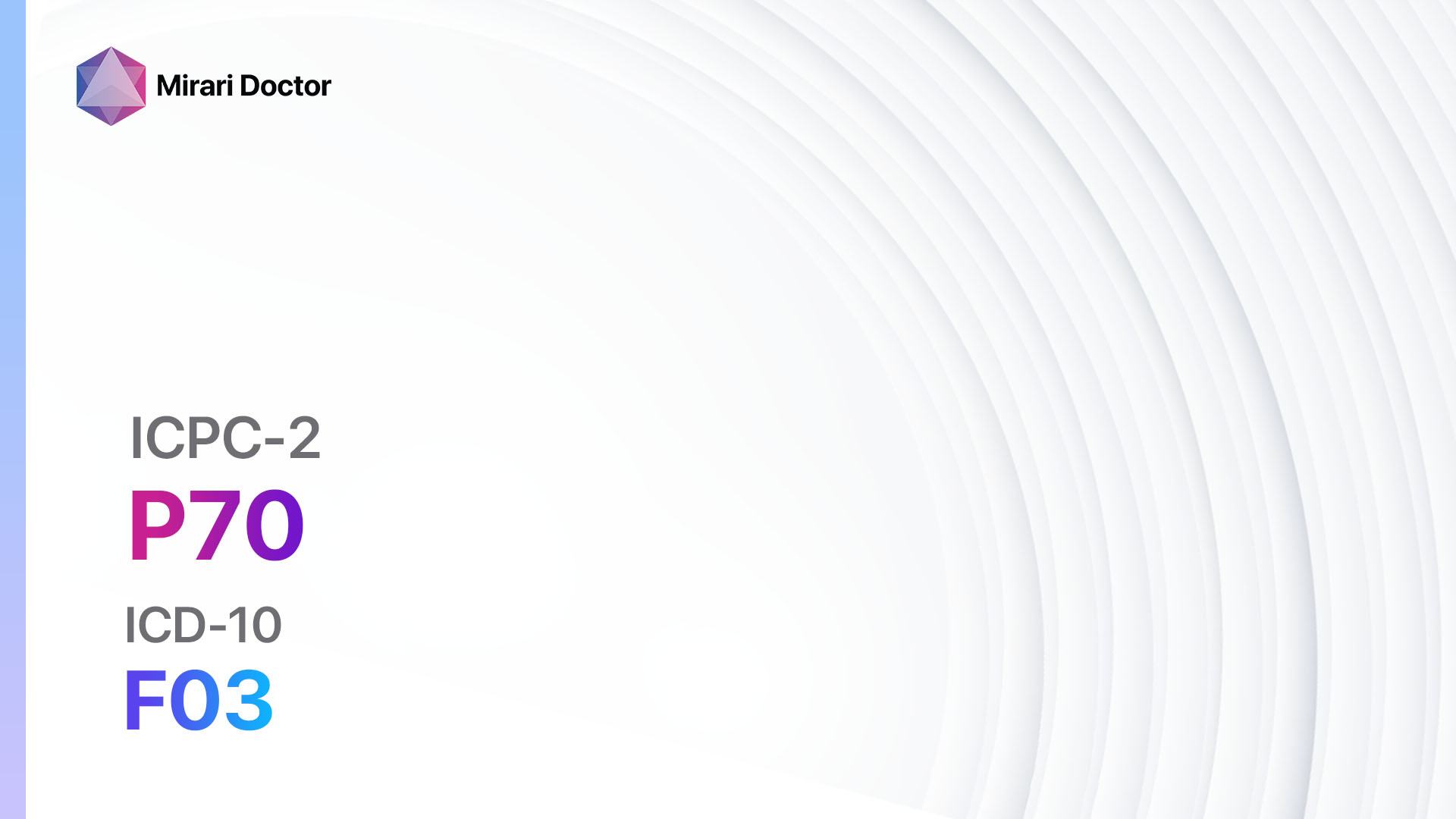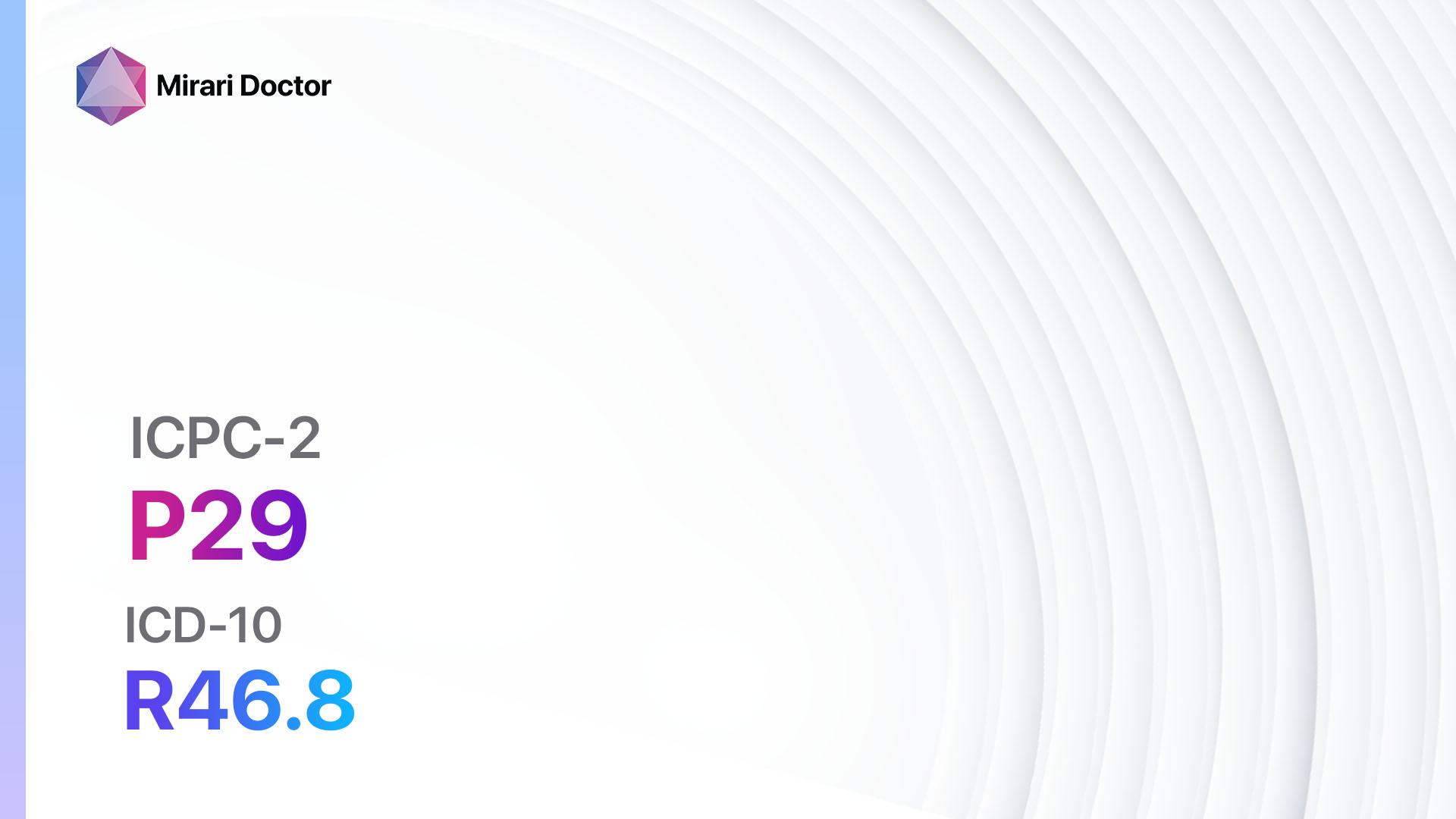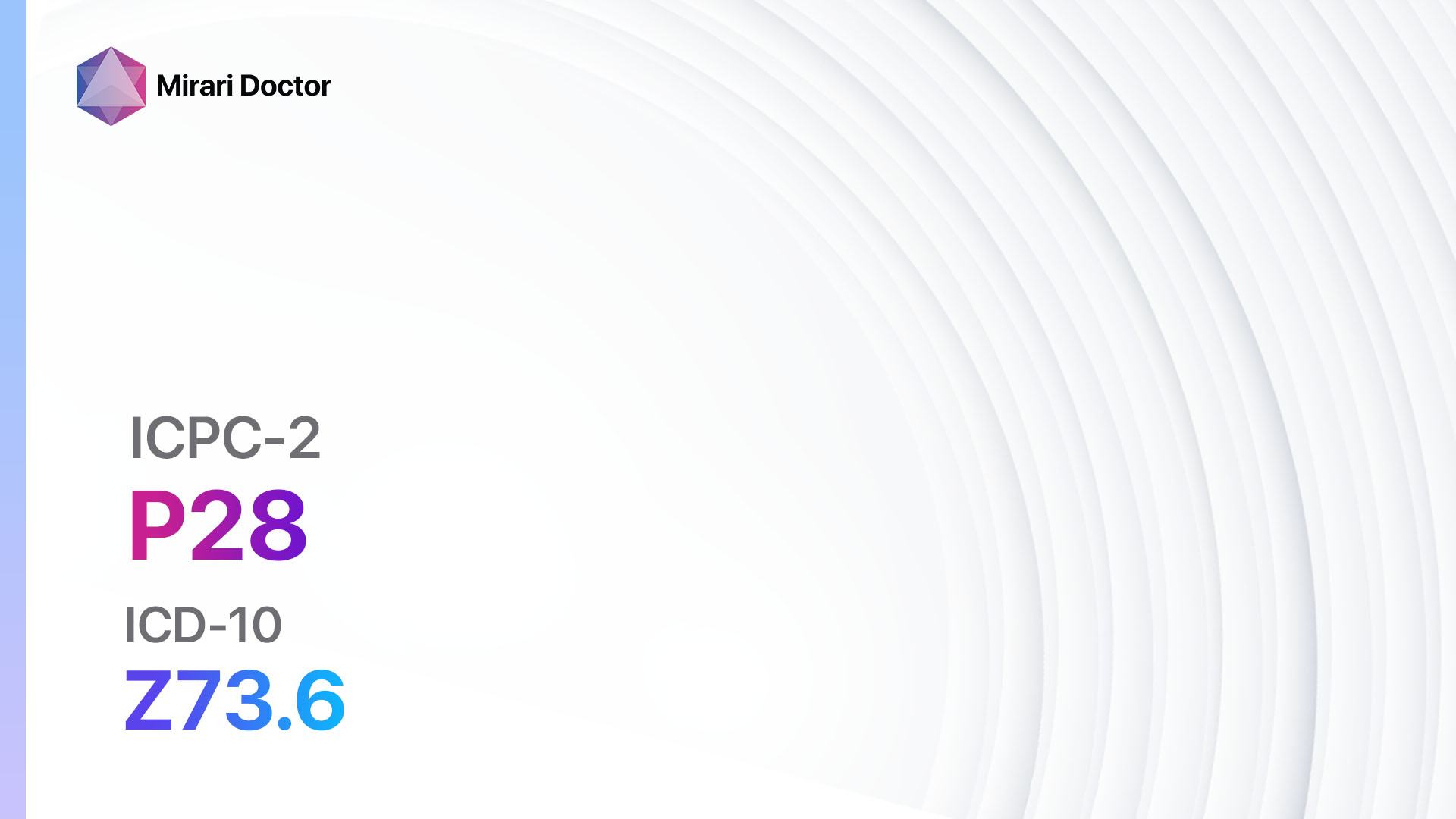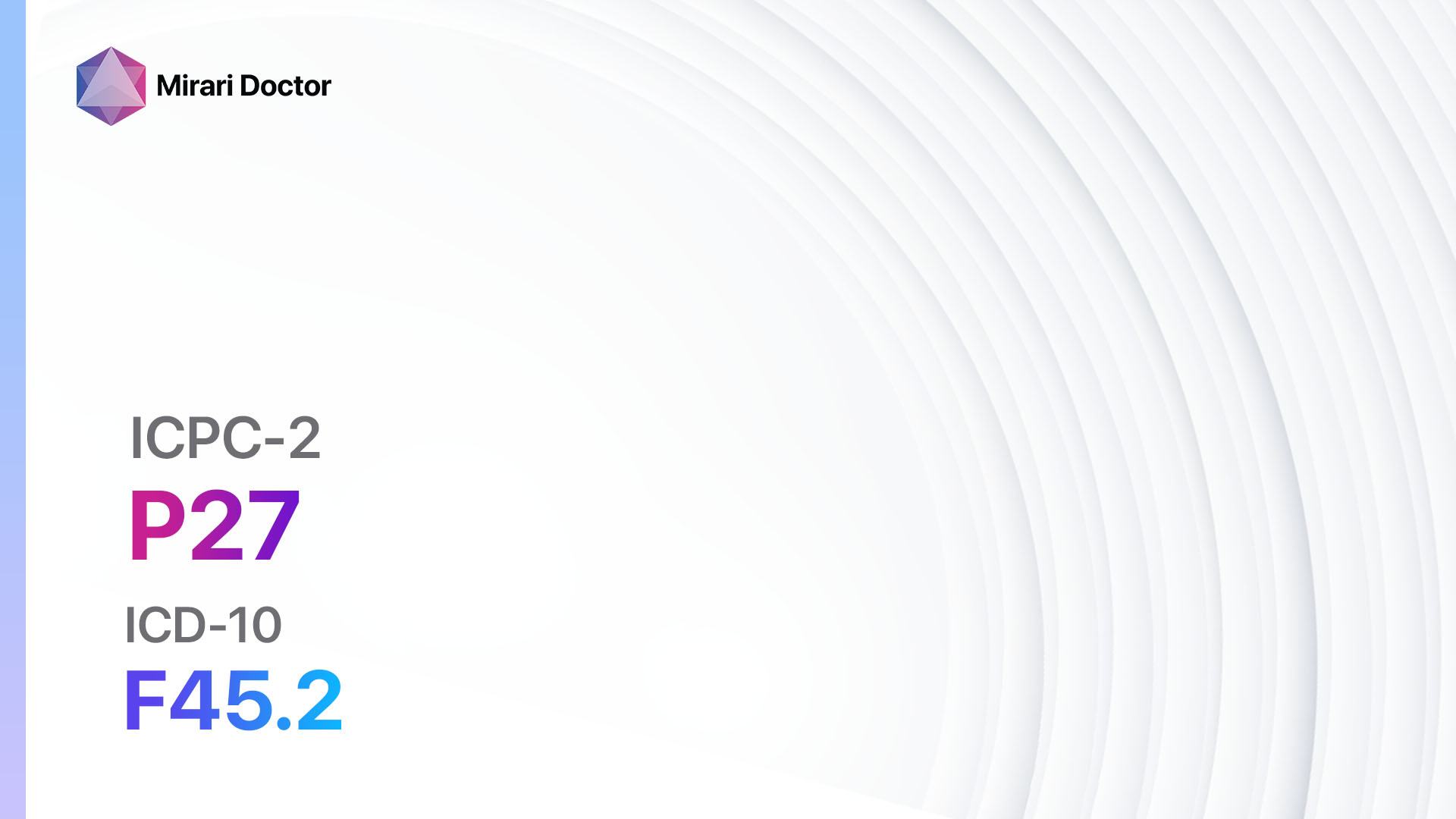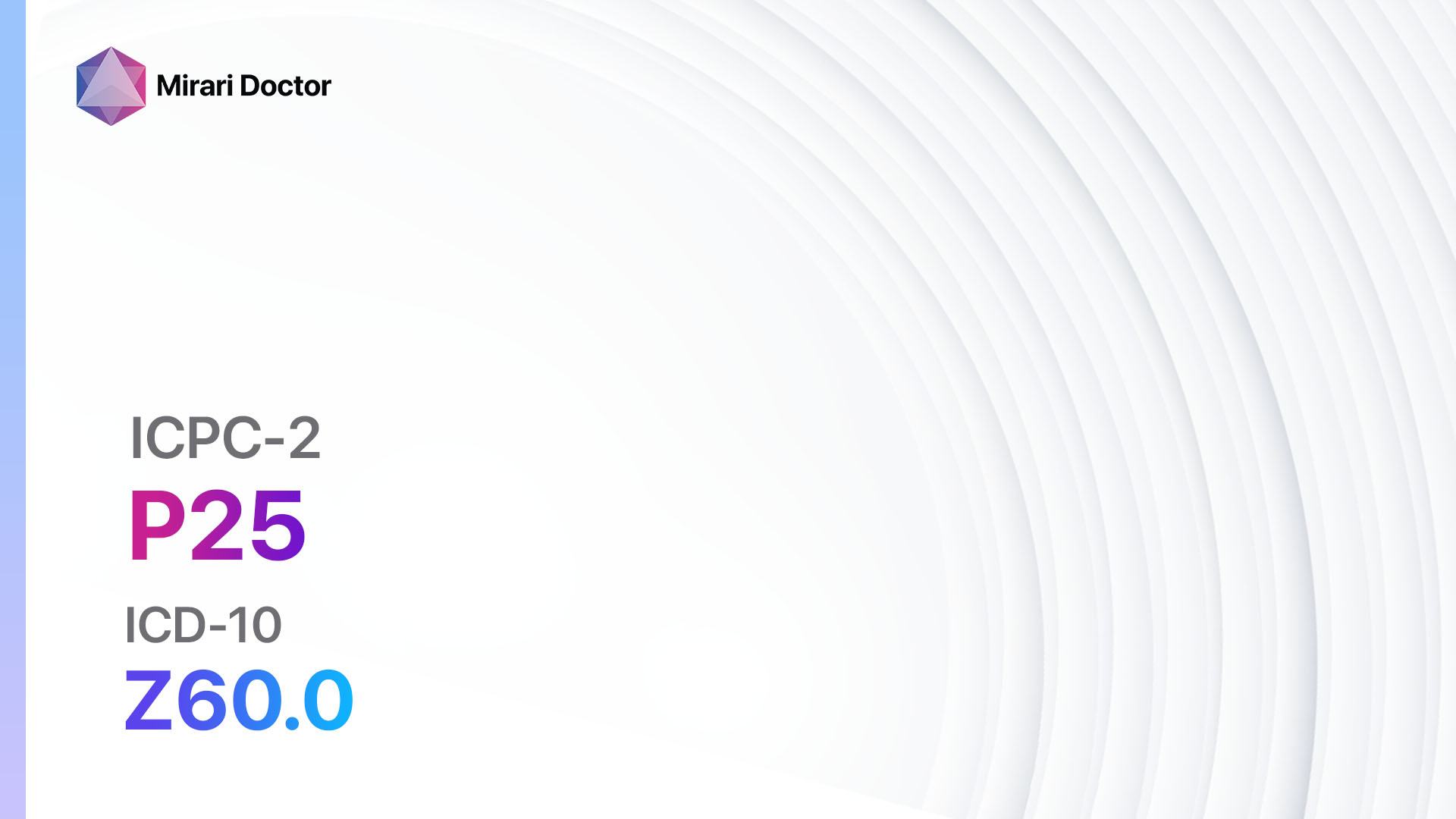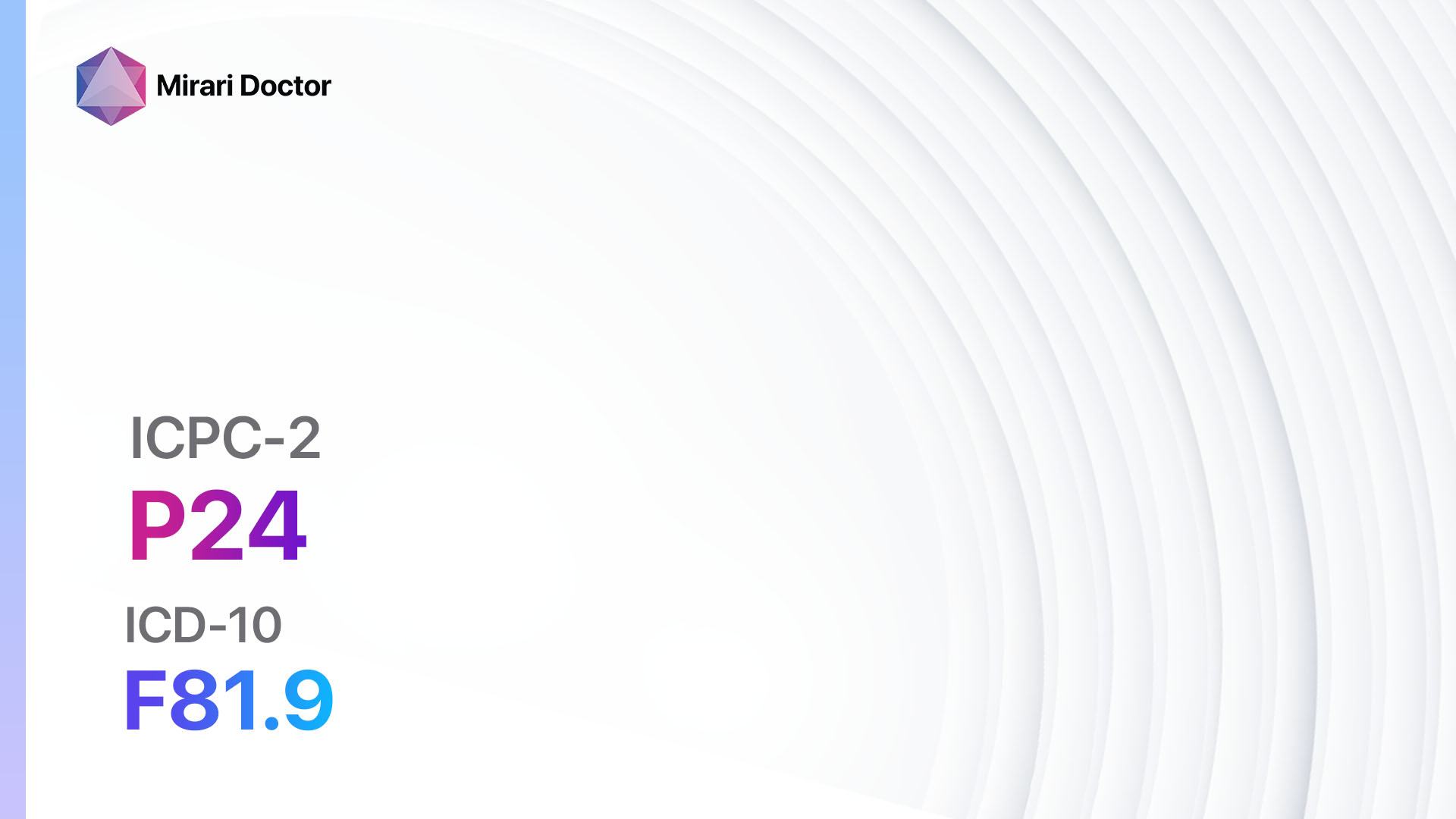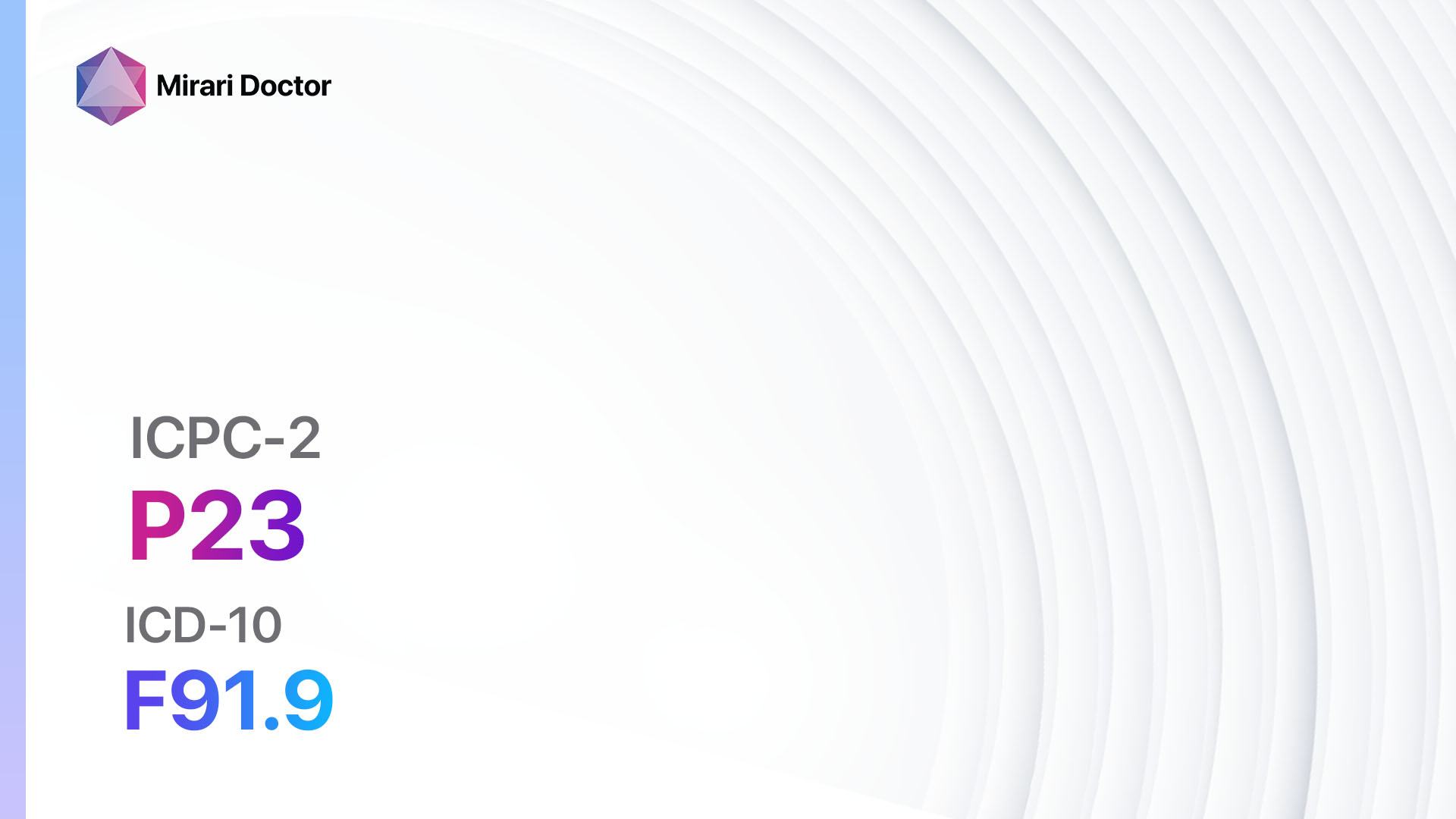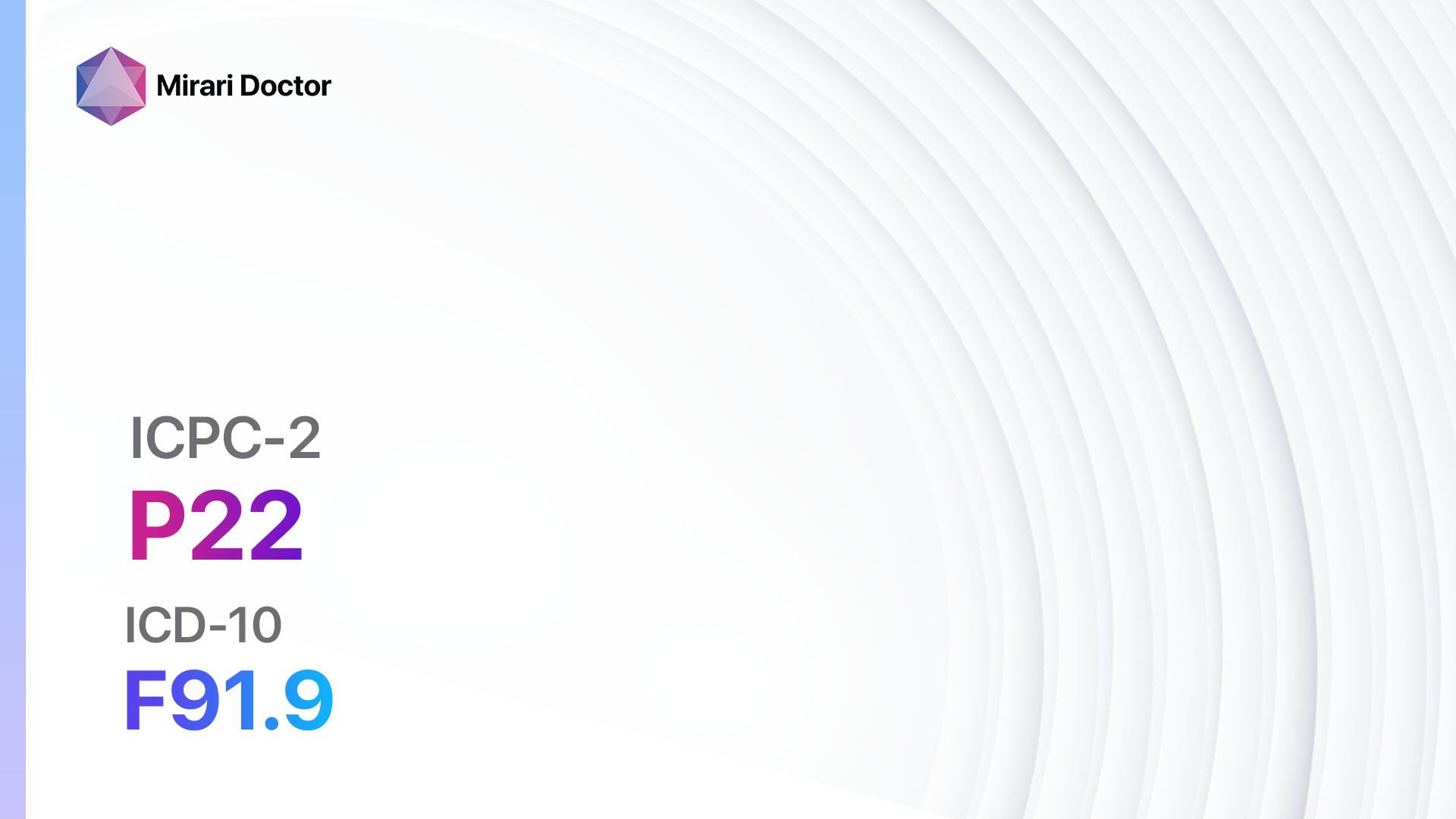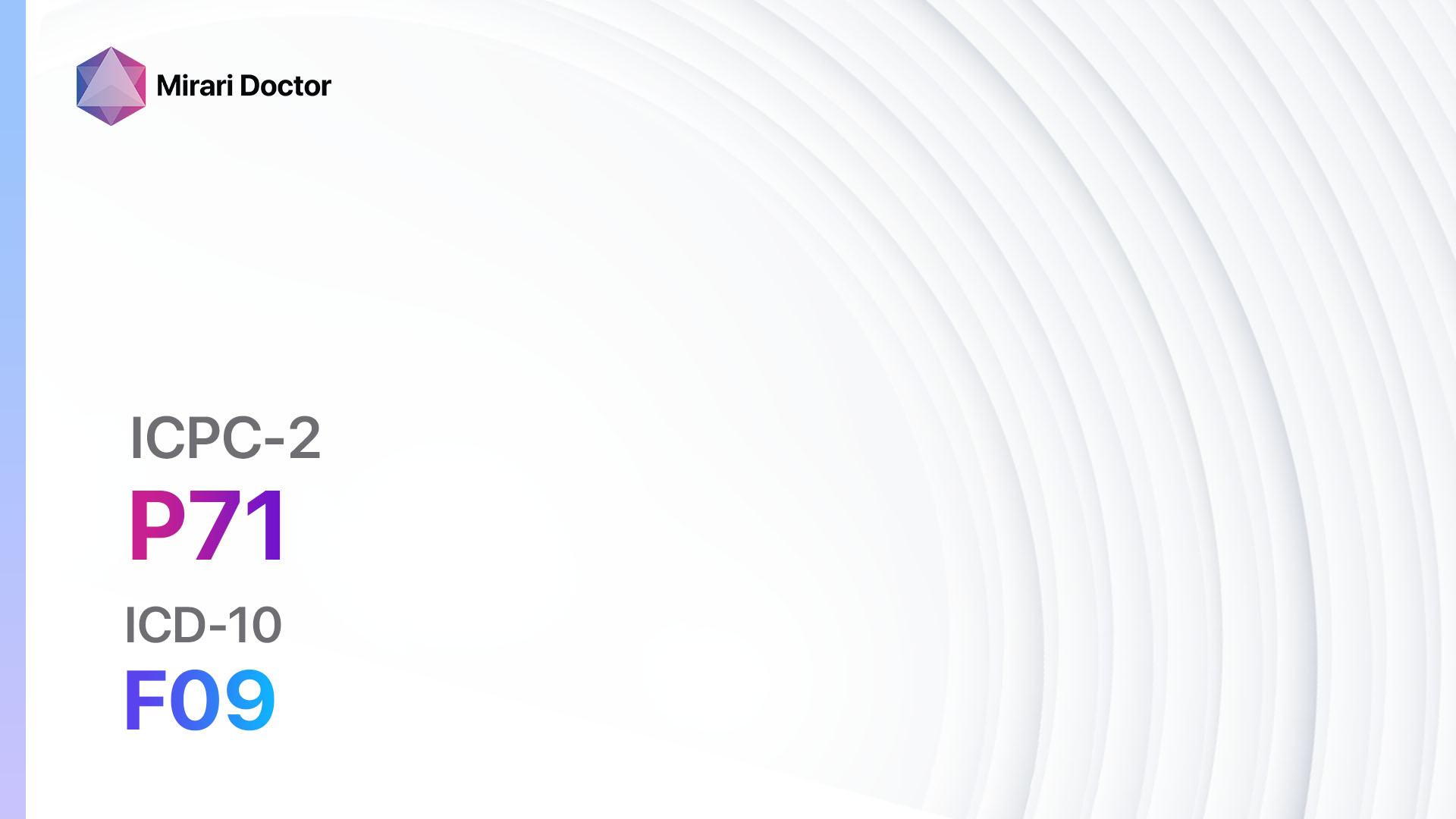
Introduction
Organic psychosis other, also known as organic delusional disorder, is a rare psychiatric condition characterized by the presence of delusions that are caused by an underlying medical condition or substance use[1]. The aim of this guide is to provide healthcare professionals with a comprehensive overview of the diagnosis and management of organic psychosis other.
Codes
- ICPC-2 Code: P71 Organic psychosis other
- ICD-10 Code: F09 Unspecified organic or symptomatic mental disorder
Symptoms
- Delusions: Patients with organic psychosis other experience fixed, false beliefs that are not based in reality.
- These delusions can be bizarre or non-bizarre in nature[2].
- Hallucinations: Some patients may also experience hallucinations, which are sensory perceptions that occur without any external stimuli[3].
- Disorganized thinking: Patients may have difficulty organizing their thoughts and may exhibit incoherent speech[4].
- Emotional disturbances: Mood swings, depression, anxiety, and irritability are common in organic psychosis other[5].
- Cognitive impairment: Patients may experience difficulties with memory, attention, and executive functioning[6].
Causes
- Medical conditions: Organic psychosis other can be caused by various medical conditions, including neurological disorders (e.g., dementia, Parkinson’s disease), endocrine disorders (e.g., hypothyroidism, hyperthyroidism), autoimmune disorders (e.g., lupus, multiple sclerosis), and infections (e.g., HIV, syphilis)[7].
- Substance use: Chronic use of substances such as alcohol, amphetamines, cocaine, and hallucinogens can lead to organic psychosis other[8].
Diagnostic Steps
Medical History
- Obtain a detailed medical history to identify any underlying medical conditions or substance use that may be contributing to the development of organic psychosis other[9].
- Ask about the onset and duration of symptoms, as well as any family history of psychiatric disorders or medical conditions.
- Assess for any recent changes in medication or substance use.
Physical Examination
- Perform a thorough physical examination to identify any signs of underlying medical conditions that may be causing organic psychosis other.
- Pay particular attention to neurological and endocrine signs, as well as any signs of substance use.
Laboratory Tests
- Complete blood count (CBC): To assess for any signs of infection or anemia.
- Comprehensive metabolic panel (CMP): To evaluate liver and kidney function, as well as electrolyte levels.
- Thyroid function tests: To assess thyroid hormone levels.
- Vitamin B12 and folate levels: Deficiencies in these vitamins can cause neurological symptoms.
- Syphilis serology: To rule out syphilis infection.
- HIV test: To screen for HIV infection.
- Drug screening: To identify any substances that may be contributing to the development of organic psychosis other.
Diagnostic Imaging
- Magnetic resonance imaging (MRI) of the brain: To assess for any structural abnormalities or signs of neurological disorders[10].
- Computed tomography (CT) scan of the brain: To evaluate for any signs of brain injury or tumors.
- Electroencephalogram (EEG): To assess for any abnormal electrical activity in the brain.
Other Tests
- Neuropsychological testing: To evaluate cognitive function and identify any specific areas of impairment.
- Sleep studies: To assess for any sleep disorders that may be contributing to the development of organic psychosis other.
Follow-up and Patient Education
- Schedule regular follow-up appointments to monitor the patient’s symptoms and response to treatment.
- Provide education to the patient and their family about the nature of organic psychosis other, its potential causes, and the importance of adhering to treatment.
Possible Interventions
Traditional Interventions
Medications:
Top 5 drugs for organic psychosis other:
- Antipsychotics (e.g., Risperidone, Olanzapine, Quetiapine):
- Cost: Generic versions can range from $10 to $100 per month.
- Contraindications: Hypersensitivity to antipsychotics, severe liver disease.
- Side effects: Sedation, weight gain, extrapyramidal symptoms.
- Severe side effects: Neuroleptic malignant syndrome, tardive dyskinesia.
- Drug interactions: Other medications that prolong the QT interval.
- Warning: Regular monitoring of metabolic parameters (e.g., weight, blood glucose) is required.
- Mood stabilizers (e.g., Lithium, Valproate):
- Cost: Generic versions can range from $10 to $50 per month.
- Contraindications: Severe renal or hepatic impairment, pregnancy.
- Side effects: Tremor, weight gain, gastrointestinal disturbances.
- Severe side effects: Renal failure, hepatotoxicity.
- Drug interactions: Other medications that affect renal or hepatic function.
- Warning: Regular monitoring of renal and hepatic function, as well as serum lithium levels, is required.
- Antidepressants (e.g., Selective serotonin reuptake inhibitors, Tricyclic antidepressants):
- Cost: Generic versions can range from $10 to $50 per month.
- Contraindications: Hypersensitivity to antidepressants, recent myocardial infarction.
- Side effects: Nausea, sexual dysfunction, insomnia.
- Severe side effects: Serotonin syndrome, cardiac arrhythmias.
- Drug interactions: Monoamine oxidase inhibitors, other serotonergic medications.
- Warning: Increased risk of suicidal ideation in young adults.
- Benzodiazepines (e.g., Lorazepam, Diazepam):
- Cost: Generic versions can range from $10 to $30 per month.
- Contraindications: Hypersensitivity to benzodiazepines, severe respiratory insufficiency.
- Side effects: Sedation, dizziness, cognitive impairment.
- Severe side effects: Respiratory depression, paradoxical reactions.
- Drug interactions: Other central nervous system depressants.
- Warning: Risk of dependence and withdrawal symptoms with long-term use.
- Cholinesterase inhibitors (e.g., Donepezil, Rivastigmine):
- Cost: Generic versions can range from $10 to $50 per month.
- Contraindications: Hypersensitivity to cholinesterase inhibitors, bradycardia.
- Side effects: Nausea, vomiting, diarrhea.
- Severe side effects: Bradycardia, syncope.
- Drug interactions: Other medications that affect heart rate or gastrointestinal motility.
- Warning: Regular monitoring of heart rate is required.
Alternative Drugs:
- Nootropics (e.g., Piracetam): Cognitive enhancers that may improve cognitive function.
- Anticonvulsants (e.g., Carbamazepine, Lamotrigine): May be used as mood stabilizers in certain cases.
- Antihistamines (e.g., Hydroxyzine): Can be used for sedation and anxiety relief.
- Beta-blockers (e.g., Propranolol): May help manage symptoms of anxiety and agitation.
- Stimulants (e.g., Methylphenidate): Can be used to improve attention and concentration.
Surgical Procedures:
- There are no surgical procedures specifically indicated for the treatment of organic psychosis other.
Alternative Interventions
- Cognitive-behavioral therapy (CBT): A form of psychotherapy that helps patients identify and change negative thought patterns and behaviors. Cost: $100-$200 per session.
- Art therapy: The use of art as a therapeutic tool to express emotions and improve self-awareness. Cost: $50-$100 per session.
- Music therapy: The use of music to promote emotional well-being and improve communication. Cost: $50-$100 per session.
- Mindfulness meditation: A practice that involves focusing one’s attention on the present moment to reduce stress and enhance self-awareness. Cost: Varies (can be self-guided or done with a therapist).
- Yoga: A mind-body practice that combines physical postures, breathing exercises, and meditation to promote relaxation and improve mental well-being. Cost: $10-$20 per class.
Lifestyle Interventions
- Regular exercise: Engaging in regular physical activity can help improve mood, reduce anxiety, and enhance cognitive function. Cost: Varies (can be done at home or at a gym).
- Healthy diet: Consuming a balanced diet rich in fruits, vegetables, whole grains, and lean proteins can support overall brain health. Cost: Varies depending on food choices.
- Adequate sleep: Getting enough sleep is essential for optimal brain function and mental well-being. Cost: Varies (no additional cost).
- Stress management: Engaging in stress-reducing activities such as deep breathing exercises, meditation, or hobbies can help improve symptoms. Cost: Varies (can be done at home).
- Social support: Maintaining strong social connections and seeking support from friends, family, or support groups can help improve mental well-being. Cost: Varies (no additional cost).
It is important to note that the cost ranges provided are approximate and may vary depending on the location and availability of the interventions.
Mirari Cold Plasma Alternative Intervention
Understanding Mirari Cold Plasma
- Safe and Non-Invasive Treatment: Mirari Cold Plasma is a safe and non-invasive treatment option for various skin conditions. It does not require incisions, minimizing the risk of scarring, bleeding, or tissue damage.
- Efficient Extraction of Foreign Bodies: Mirari Cold Plasma facilitates the removal of foreign bodies from the skin by degrading and dissociating organic matter, allowing easier access and extraction.
- Pain Reduction and Comfort: Mirari Cold Plasma has a local analgesic effect, providing pain relief during the treatment, making it more comfortable for the patient.
- Reduced Risk of Infection: Mirari Cold Plasma has antimicrobial properties, effectively killing bacteria and reducing the risk of infection.
- Accelerated Healing and Minimal Scarring: Mirari Cold Plasma stimulates wound healing and tissue regeneration, reducing healing time and minimizing the formation of scars.
Mirari Cold Plasma Prescription
Video instructions for using Mirari Cold Plasma Device – P71 Organic psychosis other (ICD-10:F09)
| Mild | Moderate | Severe |
| Mode setting: 2 (Wound Healing) Location: 7 (Neuro system & ENT) Morning: 15 minutes, Evening: 15 minutes | Mode setting: 2 (Wound Healing) Location: 7 (Neuro system & ENT) Morning: 30 minutes, Lunch: 30 minutes, Evening: 30 minutes | Mode setting: 2 (Wound Healing) Location: 7 (Neuro system & ENT) Morning: 30 minutes, Lunch: 30 minutes, Evening: 30 minutes |
| Mode setting: 7 (Immunotherapy) Location: 1 (Sacrum) Morning: 15 minutes, Evening: 15 minutes | Mode setting: 7 (Immunotherapy) Location: 1 (Sacrum) Morning: 30 minutes, Lunch: 30 minutes, Evening: 30 minutes | Mode setting: 7 (Immunotherapy) Location: 1 (Sacrum) Morning: 30 minutes, Lunch: 30 minutes, Evening: 30 minutes |
| Mode setting:7 (Immunotherapy) Location: 6 (Throat, Lymphatic & Thyroid) Morning:15minutes, Evening:15minutes | Mode setting:7 (Immunotherapy) Location: 6 (Throat, Lymphatic & Thyroid) Morning:30minutes, Lunch:30minutes, Evening:30minutes | Mode setting:7 (Immunotherapy) Location: 6 (Throat, Lymphatic & Thyroid) Morning:30minutes, Lunch:30minutes, Evening:30minutes |
| Total Morning:45minutesapprox.$7.50USD, Evening:45minutesapprox.$7.50USD | Total Morning:90minutesapprox.$15USD, Lunch:90minutesapprox. $15 USD, Evening:90minutesapprox. $15 USD, | Total Morning:90minutesapprox.$15USD, Lunch:90minutesapprox. $15 USD, Evening:90minutesapprox. $15 USD, |
| Usualtreatmentfor7-60daysapprox.$105USD–$900USD | Usualtreatmentfor6-8weeksapprox.$1,890USD–$2,520USD | Usualtreatmentfor3-6monthsapprox.$4,050USD–$8,100USD |
 |
|
Use the Mirari Cold Plasma device to treat Organic psychosis other effectively.
WARNING: MIRARI COLD PLASMA IS DESIGNED FOR THE HUMAN BODY WITHOUT ANY ARTIFICIAL OR THIRD PARTY PRODUCTS. USE OF OTHER PRODUCTS IN COMBINATION WITH MIRARI COLD PLASMA MAY CAUSE UNPREDICTABLE EFFECTS, HARM OR INJURY. PLEASE CONSULT A MEDICAL PROFESSIONAL BEFORE COMBINING ANY OTHER PRODUCTS WITH USE OF MIRARI.
Step 1: Cleanse the Skin
- Start by cleaning the affected area of the skin with a gentle cleanser or mild soap and water. Gently pat the area dry with a clean towel.
Step 2: Prepare the Mirari Cold Plasma device
- Ensure that the Mirari Cold Plasma device is fully charged or has fresh batteries as per the manufacturer’s instructions. Make sure the device is clean and in good working condition.
- Switch on the Mirari device using the power button or by following the specific instructions provided with the device.
- Some Mirari devices may have adjustable settings for intensity or treatment duration. Follow the manufacturer’s instructions to select the appropriate settings based on your needs and the recommended guidelines.
Step 3: Apply the Device
- Place the Mirari device in direct contact with the affected area of the skin. Gently glide or hold the device over the skin surface, ensuring even coverage of the area experiencing.
- Slowly move the Mirari device in a circular motion or follow a specific pattern as indicated in the user manual. This helps ensure thorough treatment coverage.
Step 4: Monitor and Assess:
- Keep track of your progress and evaluate the effectiveness of the Mirari device in managing your Organic psychosis other. If you have any concerns or notice any adverse reactions, consult with your health care professional.
Note
This guide is for informational purposes only and should not replace the advice of a medical professional. Always consult with your healthcare provider or a qualified medical professional for personal advice, diagnosis, or treatment. Do not solely rely on the information presented here for decisions about your health. Use of this information is at your own risk. The authors of this guide, nor any associated entities or platforms, are not responsible for any potential adverse effects or outcomes based on the content.
Mirari Cold Plasma System Disclaimer
- Purpose: The Mirari Cold Plasma System is a Class 2 medical device designed for use by trained healthcare professionals. It is registered for use in Thailand and Vietnam. It is not intended for use outside of these locations.
- Informational Use: The content and information provided with the device are for educational and informational purposes only. They are not a substitute for professional medical advice or care.
- Variable Outcomes: While the device is approved for specific uses, individual outcomes can differ. We do not assert or guarantee specific medical outcomes.
- Consultation: Prior to utilizing the device or making decisions based on its content, it is essential to consult with a Certified Mirari Tele-Therapist and your medical healthcare provider regarding specific protocols.
- Liability: By using this device, users are acknowledging and accepting all potential risks. Neither the manufacturer nor the distributor will be held accountable for any adverse reactions, injuries, or damages stemming from its use.
- Geographical Availability: This device has received approval for designated purposes by the Thai and Vietnam FDA. As of now, outside of Thailand and Vietnam, the Mirari Cold Plasma System is not available for purchase or use.
References
- Joyce, E. M. (2018). Organic psychosis: The pathobiology and treatment of delusions. CNS spectrums, 23(3), 177-185.
- Freudenreich, O. (2010). Differential diagnosis of psychotic symptoms: medical “mimics”. Psychiatric Times, 27(12), 56-61.
- Teeple, R. C., Caplan, J. P., & Stern, T. A. (2009). Visual hallucinations: differential diagnosis and treatment. Primary care companion to the Journal of clinical psychiatry, 11(1), 26.
- Arciniegas, D. B. (2015). Psychosis. Continuum: Lifelong Learning in Neurology, 21(3), 715.
- Hsu, C. W., & Chiu, N. Y. (2017). Organic mental disorders. The Medical Basis of Psychiatry, 167-188.
- Trivedi, J. K. (2006). Cognitive deficits in psychiatric disorders: Current status. Indian journal of psychiatry, 48(1), 10.
- Duwe, B. V., & Turetsky, B. I. (2002). Misdiagnosis of schizophrenia in a patient with psychotic symptoms. Neuropsychiatry, neuropsychology, and behavioral neurology, 15(4), 252-260.
- Caton, C. L., Samet, S., & Hasin, D. S. (2000). When acute-stage psychosis and substance use co-occur: differentiating substance-induced and primary psychotic disorders. Journal of Psychiatric Practice®, 6(5), 256-266.
- Griswold, K. S., Del Regno, P. A., & Berger, R. C. (2015). Recognition and differential diagnosis of psychosis in primary care. American family physician, 91(12), 856-863.
- Walterfang, M., Wood, S. J., Velakoulis, D., & Pantelis, C. (2006). Neuropathological, neurogenetic and neuroimaging evidence for white matter pathology in schizophrenia. Neuroscience & Biobehavioral Reviews, 30(7), 918-948.
Related articles
Made in USA


